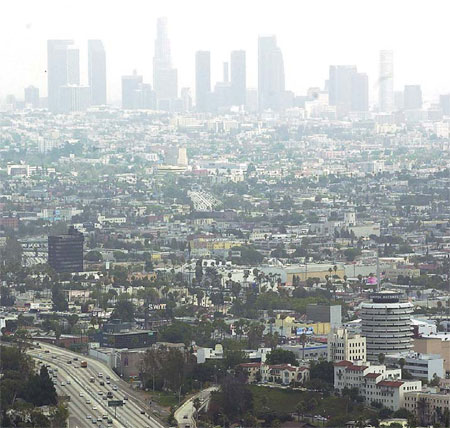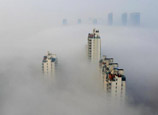
 |
| The skyline of Los Angeles obscured by a heavy layer of smog and fog on July 15, 2003. Provided to China Daily |
Complicated situation
Experts said the intensity of pollution China faces today is not as severe as the US and UK experienced previously, but the scale is much larger and the causes are far more complicated.
When the developed countries tackled air pollution caused by burning coal, industrial pollution was not a major problem, and therefore they could deal with the problem incrementally, said Ming Dengli, head of the international cooperation office at the Beijing environmental bureau.
The battle against PM2.5 and ozone pollution started at a very late stage in the process.
However, Beijing’s air pollution is characterized by a combination of coal-fired pollution, industrial pollution, motor vehicle emissions and dust, which have emerged almost simultaneously, he said.
“In the case of Beijing, the government has done almost everything that can be done, but with air pollution being a regional issue, there is no chance that the capital can make any significant changes in just a few days,” said Zhang Lei, an associate professor focusing on studies into environmental policies at the School of Environment and Natural Resources at Renmin University of China.
However, she insisted that there are still lessons to be learned from the experiences of other cities, the first being effective implementation of the relevant laws.
It took London about 20 years to lose the nickname “The City of Fog” following the enactment of the Clean Air Act 1956. By comparison, China is still facing severe smog and haze 40 years after the introduction of relevant laws.
 |  |
















 Why supervision on 'drug chicken' lacks intensity?
Why supervision on 'drug chicken' lacks intensity?


![]()
